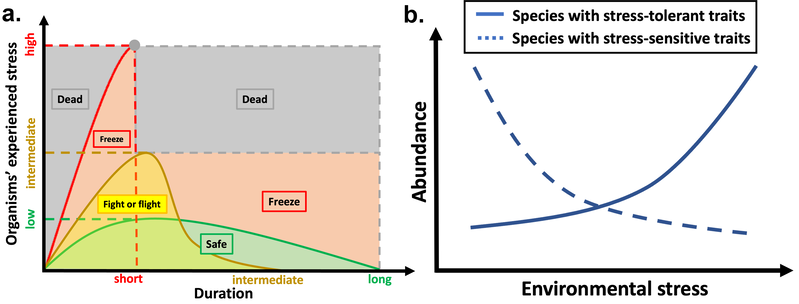Z. Zhengquan1, 2*, B. Walles3, T. Ysebeart1, 3, T. J. Bouma1,2
1 NIOZ Royal Netherlands Institute for Sea Research, Department of Estuarine and Delta Systems, Utrecht University, Yerseke, The Netherlands; 2 Faculty of Geosciences, Department of Physical Geography, Utrecht University, the Netherlands; 3 Wageningen Marine Research, Wageningen University and Research, PO Box 77, 4400 AB, Yerseke, the Netherlands
*corresponding author:
Introduction
Extreme weather events are increasing in intensity, duration, and frequency and threatening tidal flat ecosystems due to global climate change. Benthic macrofauna take essential roles in biogeomorphic feedback as ecosystem engineers, while they are prone to extreme environmental fluctuations in alternating flooding and drying tidal regimes. Moreover, modern globalization has accelerated the invasion of introduced species, which compete with native species for natural resources. Therefore, studying how benthic macrofauna respond to extreme weather events may convey an essential message on short-term erosion-deposition equilibrium and the long-term development of tidal flat ecosystems.
Methods
A mesocosm system was customized in the lab to mimic the heatwaves with contrasting magnitudes and durations on tidal flats. Simulated heatwaves were imposed on the model bioturbator species Cerastoderma edule living in different micro-topographies and sediment types, to study the response of bioturbation activities under thermal stress. Moreover, the effects of compound extreme weather events on species shift were studied by imposing different salinity settings and heatwave profiles on the native C. edule and an introduced bivalve Ruditapes philippinarum. Besides individual-level response, an in-situ experiment was applied to study the effects of repeated storm events on benthic community structure, using a raking treatment to mimic storm-induced sediment disturbance.
Results
Macrobenthos' response on the individual level is categorized into the "fight, flight, or freeze" framework. Bioturbators increase metabolic rates to "fight" against the thermal stress and maintain optimal physiological conditions; they burrowed deeper during low tide to escape from ("flight") the thermal stress, thereby causing more sediment mixings; they reduce activity and metabolism ("freeze") to maintain basic physiological functions under acute extreme stress or long-term intermediate stress. On the community level, internal environmental stress can select species with specific biological traits, while species with unfitting traits decrease in abundance. Moreover, compound extreme weather events may create "disturbance-driven invasion windows" that benefit the introduced species to overtake native species.

Figure 1: An illusion of the fight, flight, or freeze response (a) and the filtering effects of internal environmental stress on species' biological traits
I. Surname1*, F.N. Another-Surname2 , Y. Next-Surname2
1 University Name, Country; 2 Organization Name, Country
* Corresponding author: mail.name@organization.org


